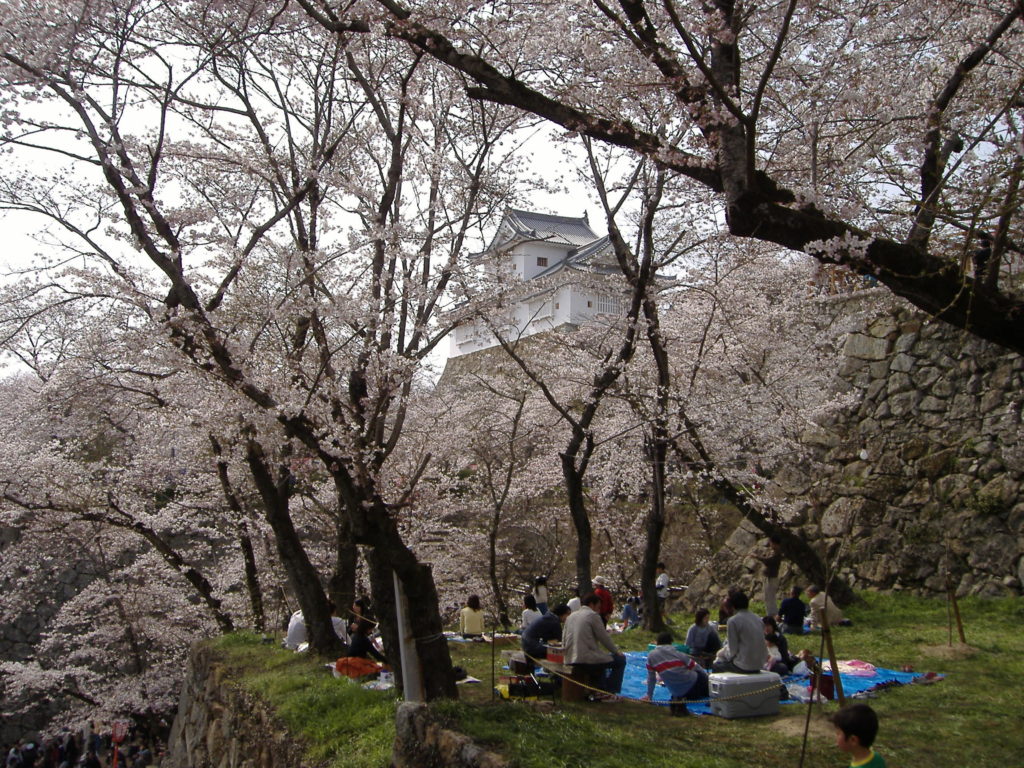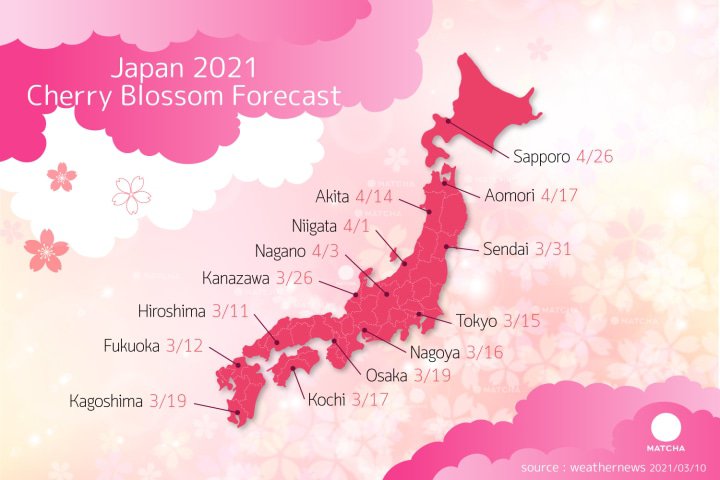
Traditionally, during Japan’s spring season, thousands of people flock to parks around Japan to see the cherry blossoms and experience a traditional hanami, or “blossom viewing.” A typical cherry-blossom picnic takes place in March as the flowers start to bloom. Friends, families, and co-workers will gather on a blanket in the park and enjoy a day of food, drinks, and fun. Some groups will sing karaoke while enjoying the flowers, and most will bring cameras to take photos of the overwhelming beauty. Scenes like these are a sure-fire sign that spring has arrived.
Cherry-blossom viewing is a tradition that extends all the way back to ancient times, when the blooming of the flowers meant that Spring planting season had arrived. However, it was during the Edo period that Japanese citizens began holding hanami banquets and parties such as we see today.
The flowers first bloom in the warmer regions of Japan, like the southern island of Kyushu. As spring progresses, the blossoms progressively appear farther north, with Hokkaido’s northern island experiencing the last blooms. These blooming flowers are incredibly impermanent– they only last about two weeks if weather conditions are right. Rain and wind can wash the blossoms away, and an especially temperate or harsh winter will affect when the flowers bloom. This is all the more reason for people to get out and enjoy the cherry blossoms while they can.

In 2020, when Covid-19 was still a novel threat, many parks were closed off to the general public. This year, the situation is less restrictive, but there are still several restrctions in place to curtail the spread of Covid-19. Citizens have been asked not to spread blankets out under the cherry-blossom trees. In Tokyo’s Ueno Park, barricades have been erected around the trees to prevent people from picnicking. In other areas, local authorities are asking people to follow one-way arrows, wear masks, and keep their visits shorter than usual.
Despite the limitations, Japanese citizens and residents won’t be deterred – the sakura season is too important to ignore. As they have for centuries, those lucky enough to witness the blossoms will be filled with an appreciation for natural beauty and the eternal optimism of spring.